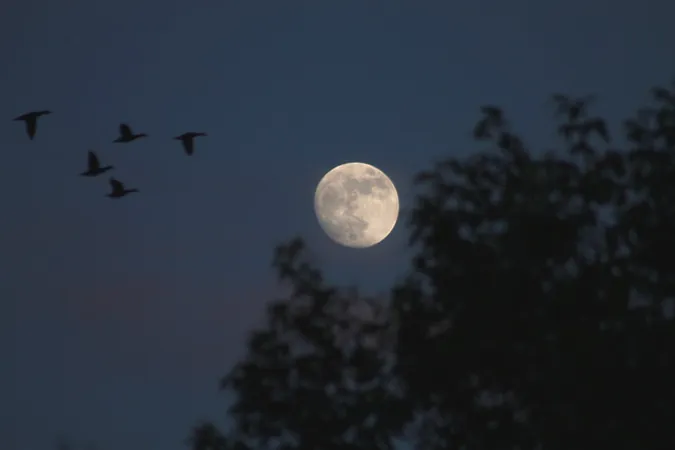
Unlocking the Mystery: The Unique Names of Full Moons Each Month
2025-06-09
Author: Michael
The Enigmatic Names of Monthly Full Moons
Did you know that each month’s full moon comes with its own special name? These names, steeped in centuries-old traditions, reflect the rhythms of nature and cultural history. From the January Wolf Moon to the December Cold Moon, these lunar labels tell a story that connects us to the changing seasons.
The Moon: Our Timeless Fascination
The moon is undoubtedly the most captivating celestial object visible at night—and sometimes even during the day! Its ever-shifting phases have inspired art, literature, and folklore for generations. Long before modern calendars, our ancestors recorded the moon's cycles, tracking time using simple notches on bones or stones.
Full Moon Phases: A Closer Look
As the moon journeys around Earth every 29.5 days, it reveals a slightly different aspect each night. This is the prime time for stargazers to explore its rugged terrain through a telescope, when shadows dance across the lunar surface. When a full moon rises just as the sun sets, it becomes perfectly round and brilliantly lit—save for the Earth’s shadow, which may cast a dark band nearby. Yet, while a full moon is stunning, it often appears more like a flat disk under magnification, losing some of its three-dimensional charm.
The Full Moon Calendar: A Seasonal Guide
Each full moon of the year has its unique title, echoing natural phenomena or cultural practices. Many people know of the Hunter’s Moon in October, but here’s the complete list that showcases the seasonal transition throughout the year: - January: Full Wolf Moon - February: Full Snow Moon - March: Full Worm Moon - April: Full Pink Moon - May: Full Flower Moon - June: Full Strawberry Moon - July: Full Buck Moon - August: Full Sturgeon Moon - September: Full Corn (or Harvest) Moon - October: Full Hunter’s Moon - November: Full Beaver Moon - December: Full Cold Moon.
What Happens When There Are Two Full Moons?
Ever heard of a Blue Moon? This rare occurrence is when two full moons grace a single month—the first with its assigned name and the second making a surprise appearance either at the end of the month. This cosmic event happens roughly once every 30 months and delights skywatchers everywhere.
The Spectacular Super Moon
You may also come across the term Super Moon, coined by an astrologer in 1979. This phenomenon happens when a full moon coincides with its closest approach to Earth. During a Super Moon, the moon appears 14% larger and 30% brighter than its most distant position—an awe-inspiring sight for all!
A Connection Through Time
Interestingly, the moon is tidally locked to Earth, meaning we always see the same face—the same one that our ancestors gazed upon centuries ago. So, the next time you marvel at the moon, remember that you’re not just admiring a celestial body; you’re connecting with the past and those who looked up at it before you.









 Brasil (PT)
Brasil (PT)
 Canada (EN)
Canada (EN)
 Chile (ES)
Chile (ES)
 Česko (CS)
Česko (CS)
 대한민국 (KO)
대한민국 (KO)
 España (ES)
España (ES)
 France (FR)
France (FR)
 Hong Kong (EN)
Hong Kong (EN)
 Italia (IT)
Italia (IT)
 日本 (JA)
日本 (JA)
 Magyarország (HU)
Magyarország (HU)
 Norge (NO)
Norge (NO)
 Polska (PL)
Polska (PL)
 Schweiz (DE)
Schweiz (DE)
 Singapore (EN)
Singapore (EN)
 Sverige (SV)
Sverige (SV)
 Suomi (FI)
Suomi (FI)
 Türkiye (TR)
Türkiye (TR)
 الإمارات العربية المتحدة (AR)
الإمارات العربية المتحدة (AR)